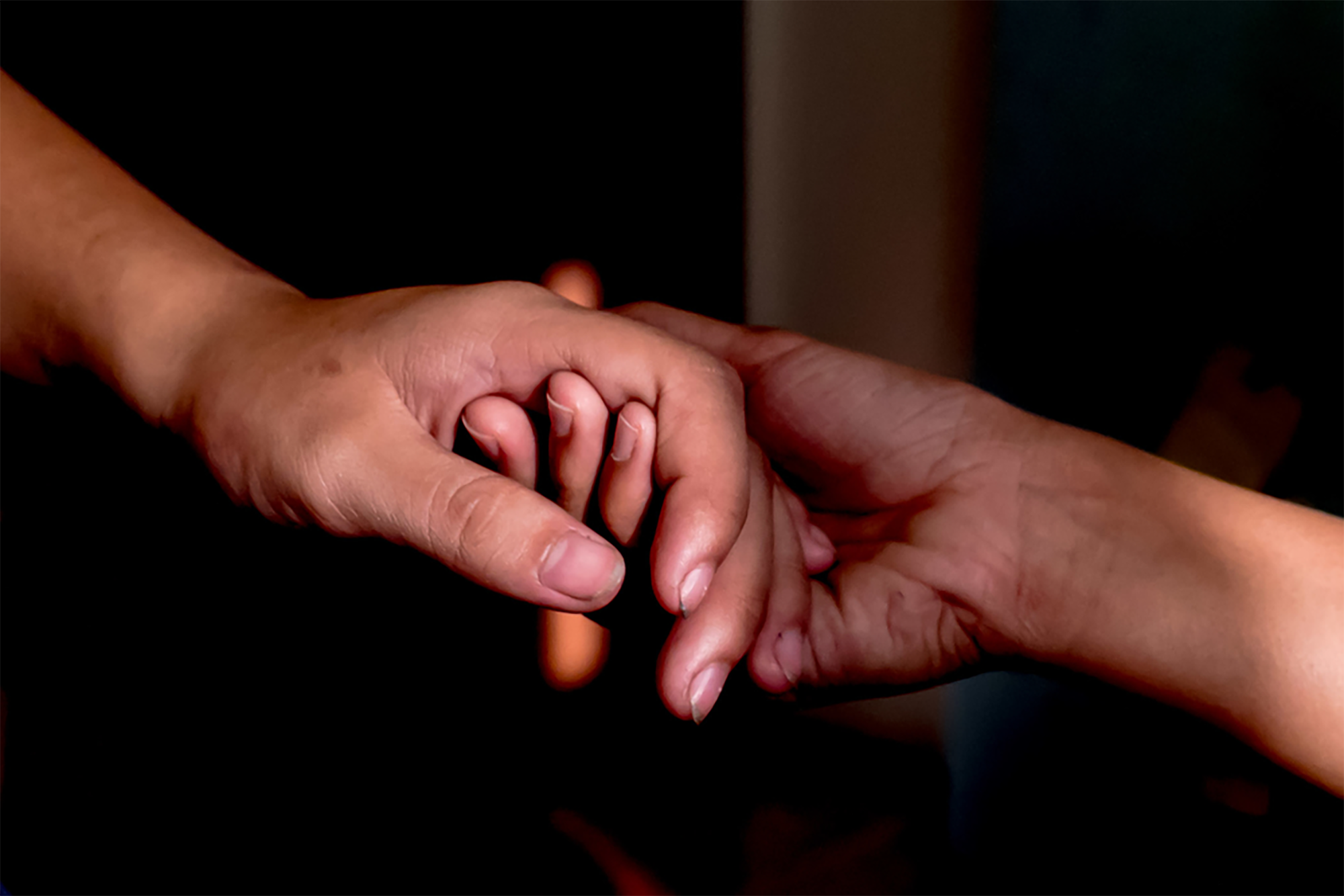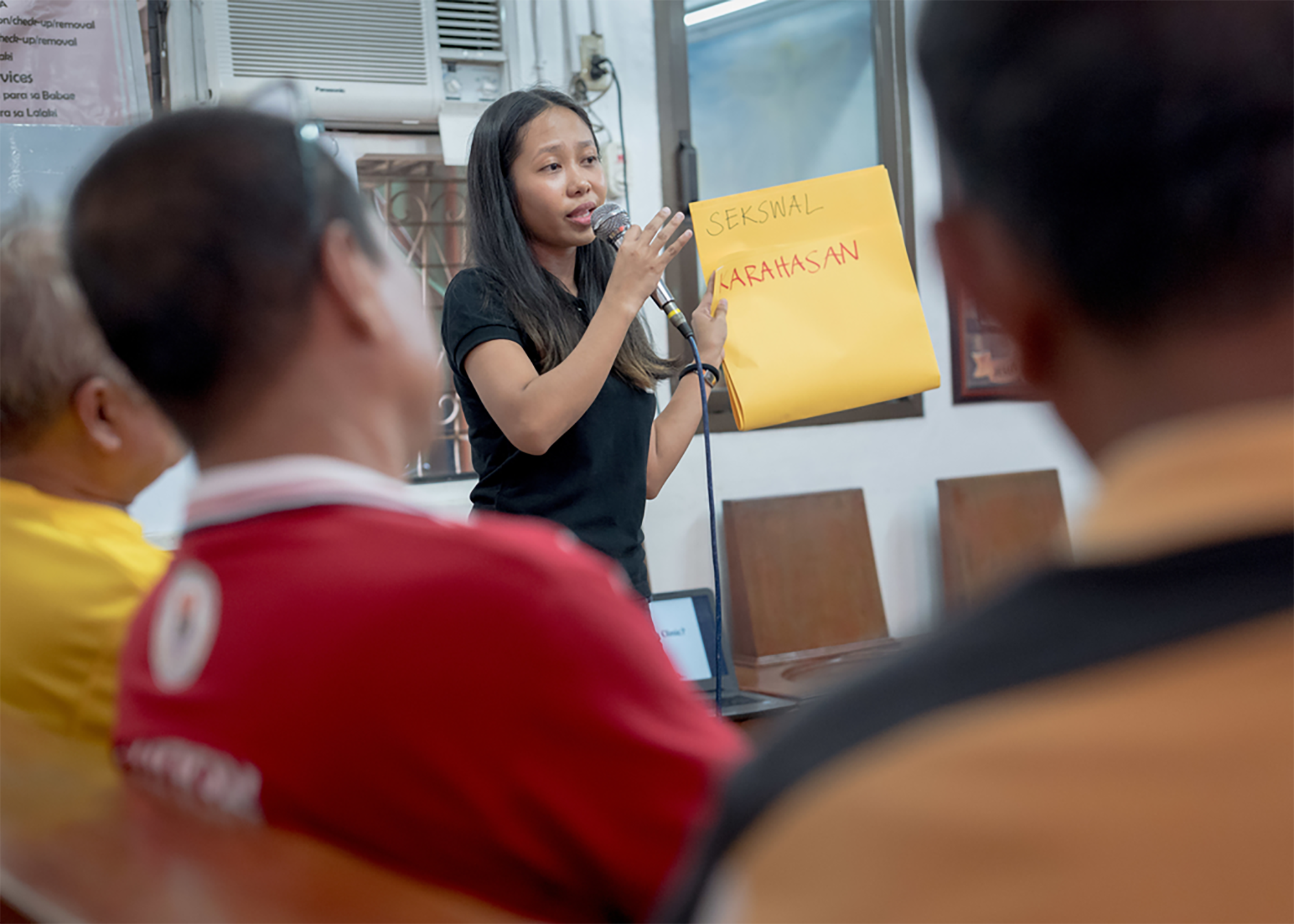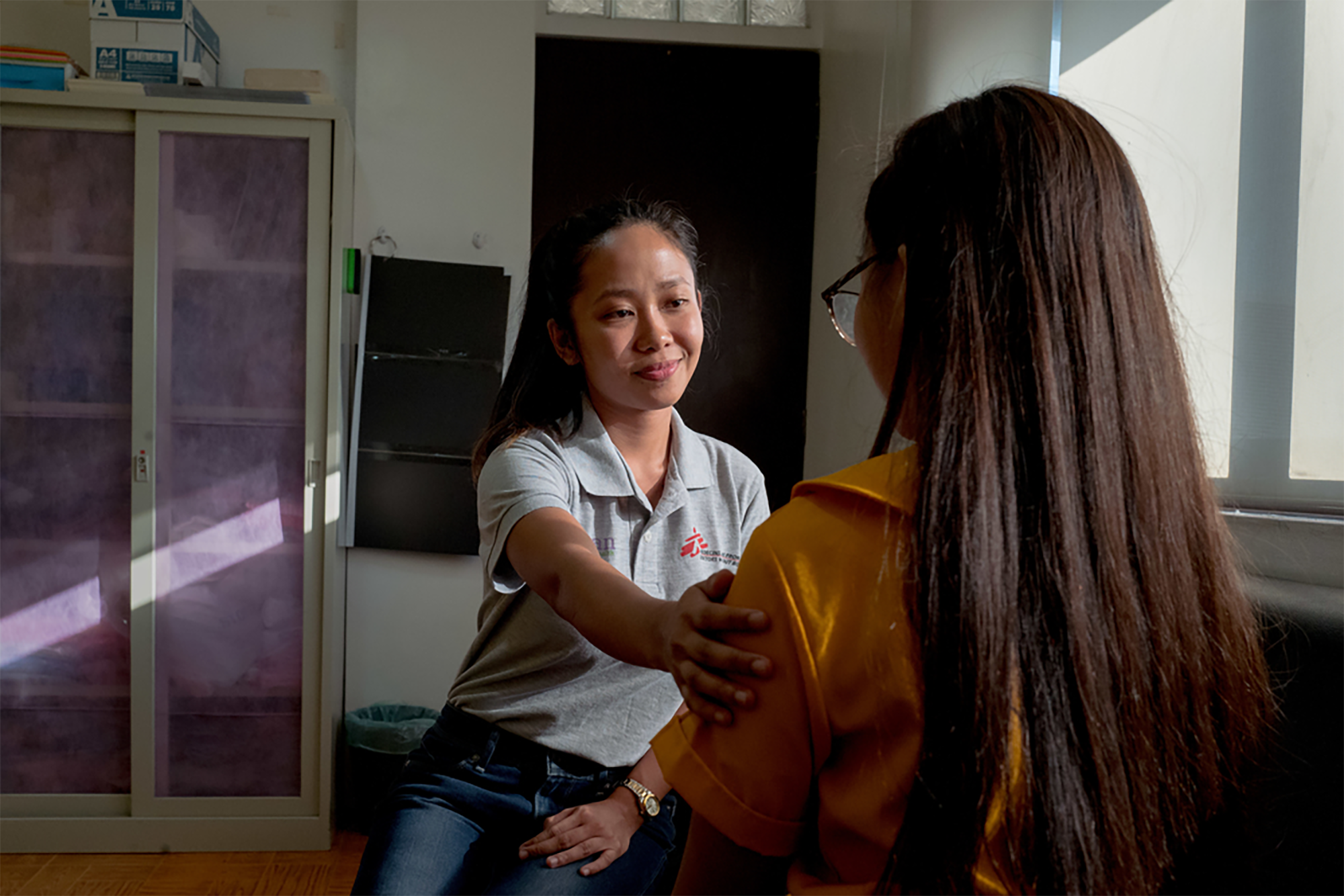- Eng
- 繁體中文
- 简体中文
What does violence against women look like?



While it’s great to celebrate all the amazing things women can do, we should not forget that women in the Philippines and all over the world still suffer from so much abuse and discrimination. Studies show that up to 70 percent of women have experienced physical and/or sexual violence from an intimate partner in their lifetime.
I have worked on sexual and reproductive health and sexual violence in the Philippines and in other countries. I was a field worker for Médecins Sans Frontières (MSF), an international, independent medical humanitarian organization. MSF was created in the belief that all people should have access to healthcare, and that includes sexual and reproductive health.
In the Philippines, MSF has been supporting Likhaan Center for Women’s Health in providing reproductive health services in Tondo slums since 2016. This includes a first-of-its-kind mobile clinic dedicated to cervical cancer prevention, screening, and treatment.
From 2018 to 2019, I worked in Rustenburg, South Africa, on an MSF project on sexual and gender-based violence. In 2015, MSF conducted a survey around Rustenburg, and found that one in two women between the ages of 18 to 49 had experienced some form of sexual violence, while one in four women had been raped in their lifetime.
Violence Against Women (VAW), Gender-Based Violence (GBV)
Many people talk about violence against women (VAW). And it’s true that, on the whole, women around the world are placed on an inferior level to men, as manifested by VAW.
But at MSF, we are constantly reminded that violence happens to many different types of people. That’s why more often, we use the term gender-based violence (GBV). The term is used to distinguish ordinary violence from violence inflicted on a person or group of people because of their gender.
GBV includes all acts causing physical suffering, either mental or sexual, the threat of such acts, as well as coercion and deprivation of freedom. GBV includes all acts causing physical suffering, either mental or sexual, the threat of such acts, as well as coercion and deprivation of freedom.
Five categories of Gender-Based Violence
There are different kinds of GBV. Sexual violence includes rape, sexual assault, sexual abuse, and sexual harassment. There is physical violence in different forms, from slapping and pushing to beating and kicking.
But not all violence is physical or sexual. There is also emotional and psychological violence, which includes verbal abuse.
Harmful traditional practices are also considered GBV. Forced marriage happens in some cultures around the world, especially to girls and young women. There is also female genital mutilation.
Have you heard of socio-economic violence? In different societies, authority, power, and finances, at work, in the household, still lie with the men. That means they hold power over others, especially the women who are dependent on them financially.
Is your friend a victim of sexual violence?
How do you know if someone, maybe your friend or a relative, is suffering from some form of GBV? To be honest, it can be difficult to detect signs, because often the signs are not specific. But there are a few signals you can look out for.
Check for vague complaints, like headaches, lower abdominal pain, sleeping or eating problems that don’t resolve themselves, or are recurring. Sometimes, these complaints are just a means for them to talk to someone or open up.
Watch out for more obvious complaints, like injuries and bleeding. Does he or she sometimes have bruises? Are there repeated "accidents"? Sometimes they might be explained by "I bumped into the door, I was so clumsy!"
Physical signs of GBV
A person who has suffered GBV may exhibit bruises, lesions, injuries, and fractures.
Sexually transmitted infections can also be linked to GBV. That includes viral infections like HIV, Hepatitis B, herpes and genital warts (HPV); bacterial infections like syphilis, chlamydia and gonorrhea; and parasitical infections like scabies and lice.
A person who has suffered GBV may also have an unwanted pregnancy. If they are already pregnant, GBV can lead to pregnancy complications, and even unsafe abortion. There are also links between GBV and disability. In children, STIs and pregnancy are considered confirmation that there is abuse.
Invisible wounds
For some people, the psychological damage is worse than the physical injury. The short-term consequences of GBV include sadness or depression, insomnia and nightmares, fear and anxiety, even anger and shame. People who have suffered from GBV often feel dirty or contaminated, and they may also feel worthless. Many blame themselves for what happened, and don’t want to talk about what happened, or have great difficulty talking about it.
Some suffer from hypervigilance or a state of increased alertness. This means they’re extremely sensitive to their surroundings, as if trying to be alert to any hidden dangers. There are some who might experience euphoria, or an unusual, exaggerated sense of happiness.
GBV can have long-term psychological consequences too: post-traumatic stress disorder (PTSD), anxiety disorders or phobias, and mood disorders such as bipolar disorder or depression. Some survivors turn to substance abuse or develop eating disorders. Some have sexual problems, while others withdraw from social activities. There are some who might exhibit aggressive behavior, and others might suffer from psychosis, or losing touch with reality.
Victim-blaming and other social consequences
We’ve all seen it, online, in the news, maybe in conversations with family or friends.
“Why did she go to his place?”
“Well what was she wearing?”
“It’s her fault for getting drunk.”
Victim-blaming is both a social consequence and a contributing factor of GBV. Perpetrators are encouraged to commit such acts because they can “get away with it” and get the sympathy of people. Many who experience GBV also find themselves excluded or rejected by friends or family. There is often stigma. “Oh, I heard she was raped,” people might say in whispers.
Many who experience GBV lose support of family or friends, or even of their own partners or peers. They are unable to work or continue their schooling because of these social consequences. Many of them are also at risk of being victimized again, as predators might consider them “easy targets.”
Girls and women who have been raped or harassed are often considered “tainted goods” and are forced to marry their rapist. In certain societies, a raped woman is considered as having committed the crime of adultery and punished accordingly.
How do you care for someone who has suffered sexual violence?
When you hear that someone has been raped or harassed, what do you do? Many people think that person should file charges to put the perpetrator in jail. Every survivor reacts and copes differently, and each experience is different. We are not there to judge, only to provide the help they need.
For MSF, sexual violence is a medical emergency. We prioritize the physical and mental well-being of the patient, and that means providing them with comprehensive healthcare.

An MSF social worker talks with Rosina Seela Moole, survivor of sexual violence at the Boitekong Kgomotso Care Centre (BKCC) MSF clinic in Rustenburg, South Africa. © Melanie Wenger
Across our projects all over the world, we have protocols for caring for a patient who has survived GBV. This is called medical management, and it is done by a medical professional. This includes a comprehensive medical assessment, including forensic examination. We do first aid to treat injuries, and administer post-exposure prophylaxis (PEP) to prevent HIV infection and to treat other STIs. We also provide vaccinations to prevent Hepatitis B and tetanus.
Psychological care is incredibly important, as the trauma of sexual violence is similar to the trauma of being tortured. Sometimes survivors break down in the middle of their physical examination, or they start crying and start talking about what happened to them. We have to be equipped with the training to provide them the support they need when that happens. We listen and help them feel safe. We explain the clinical exam and the medical exam so that they understand what we are doing. At every stage, we ask for consent, because that’s one way of giving power back to the survivor.
It can be very difficult for someone to come forward about what happened to them. As medical staff, we do our best to avoid secondary victimization, or making them relive what happened to them. And most importantly, don’t call them victims. In our project, we call them survivors, because it gives them a feeling of empowerment.
Even with all our projects, and all the people we reach, there is only so much we can do. So it’s important to educate everyone to spot the signs and to help those who cannot help themselves. Remember, if you see something, say something, do something. Check on your friends, and help them be safe.
First published on 30 March 2020 in Cosmo.ph





Leave a Comment